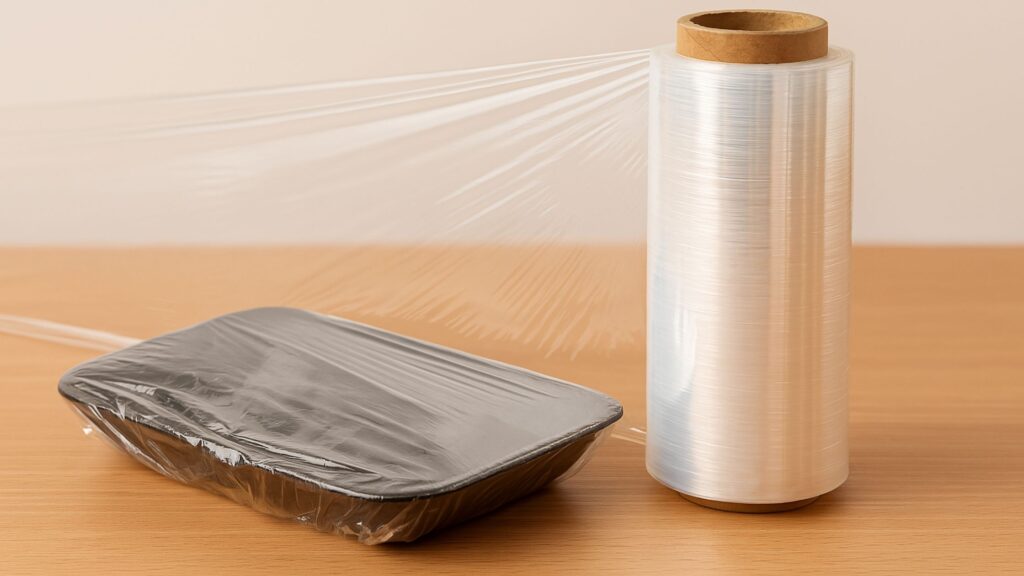Plastic wrap packaging has become an indispensable component of modern industries, offering versatility, convenience, and protection across various sectors. From food preservation to industrial applications, plastic wrap packaging provides an effective solution for packaging needs, ensuring safety, hygiene, and longevity of products. Despite concerns over environmental impact, innovations in sustainable alternatives and recycling initiatives are helping reshape its future.
Understanding Plastic Wrap Packaging
Plastic wrap packaging is a thin, flexible film primarily made from polyethylene (PE) or polyvinyl chloride (PVC). These materials provide excellent barrier properties, protecting products from moisture, air, and contaminants. Depending on its application, plastic wrap packaging can come in different forms, including stretch films, shrink wraps, and cling wraps.
Types of Plastic Wrap Packaging
- Cling Film – Used mainly in households and food industries, cling film is a transparent, stretchable wrap that adheres to surfaces, maintaining freshness and preventing contamination.
- Shrink Wrap – This type of plastic wrap contracts under heat to tightly secure products, commonly used for packaging consumer goods like electronics, food, and beverages.
- Stretch Film – Primarily used in logistics and warehousing, stretch films provide stability to palletized goods, ensuring they remain intact during transportation.
Advantages of Plastic Wrap Packaging
The popularity of plastic wrap packaging stems from its numerous benefits, making it a preferred choice in various industries.
1. Protection and Preservation
Plastic wrap packaging helps extend the shelf life of perishable goods, particularly in the food industry. By creating a barrier against air and moisture, it prevents spoilage and maintains freshness, reducing food waste.
2. Cost-Effectiveness
Compared to alternative packaging solutions, plastic wrap packaging is highly cost-effective. It requires minimal materials, reducing production costs while providing durable protection.
3. Lightweight and Space-Saving
Unlike bulky packaging materials, plastic wrap packaging is lightweight and compact, making it easier to store and transport. This efficiency reduces shipping costs and enhances logistical convenience.
4. Versatility in Applications
From preserving leftovers at home to wrapping heavy-duty industrial equipment, plastic wrap packaging is adaptable to diverse needs. Its flexibility and ease of use make it a valuable tool in multiple industries.
5. Tamper Evident and Secure
In industries such as pharmaceuticals and food processing, plastic wrap packaging provides tamper-evident seals, ensuring consumer safety and product integrity. This feature is crucial for maintaining brand reputation and regulatory compliance.
Environmental Concerns and Sustainable Alternatives
Despite its advantages, plastic wrap packaging has been a focal point in environmental discussions due to its contribution to plastic waste. Single-use plastics, if not disposed of properly, contribute to pollution and pose risks to marine and terrestrial ecosystems.
Innovations in Sustainable Plastic Wrap Packaging
Manufacturers and researchers are actively developing eco-friendly alternatives to traditional plastic wrap packaging. Some of these advancements include:
- Biodegradable Plastic Wraps – Made from plant-based materials such as polylactic acid (PLA) and polyhydroxyalkanoates (PHA), these wraps break down more easily in the environment.
- Recyclable and Reusable Wraps – Some companies have introduced plastic wrap packaging that can be recycled or reused, reducing waste accumulation.
- Compostable Wraps – Designed to decompose naturally under composting conditions, these wraps offer an environmentally friendly solution without sacrificing performance.
Recycling and Proper Disposal
One of the key measures in mitigating the environmental impact of plastic wrap packaging is ensuring proper recycling. Many regions now have designated recycling programs for plastic films, encouraging businesses and consumers to participate in waste reduction efforts. Proper disposal and awareness campaigns can significantly decrease the amount of plastic wrap that ends up in landfills or oceans.
Conclusion
Plastic wrap packaging continues to play a vital role in various industries, offering unparalleled protection, cost-efficiency, and convenience. While environmental concerns remain a challenge, the ongoing advancements in biodegradable materials, recycling initiatives, and sustainable practices provide hope for a greener future. By adopting responsible usage and disposal methods, industries and consumers alike can balance the benefits of plastic wrap packaging with environmental sustainability.
Related Articles
- Shredded Paper for Packaging: A Sustainable and Cost-Effective Solution
- Bubble Packaging: The Ultimate Solution for Protection and Sustainability
- Sandwich Packaging: Ensuring Freshness, Sustainability, and Appeal
- Biodegradable Food Packaging: A Sustainable Solution for the Future
- Eco Friendly Food Packaging: A Sustainable Choice for the Future
- Tissue Paper Packaging: The Eco-Friendly & Elegant Solution
- The Importance of Bakery Packaging: Enhancing Freshness and Branding
- Gift Packaging: Making Every Present Special
- Jewelry Packaging: Elevate Your Brand and Unbox Elegance
- The Ultimate Guide to Packaging for Small Business Success

